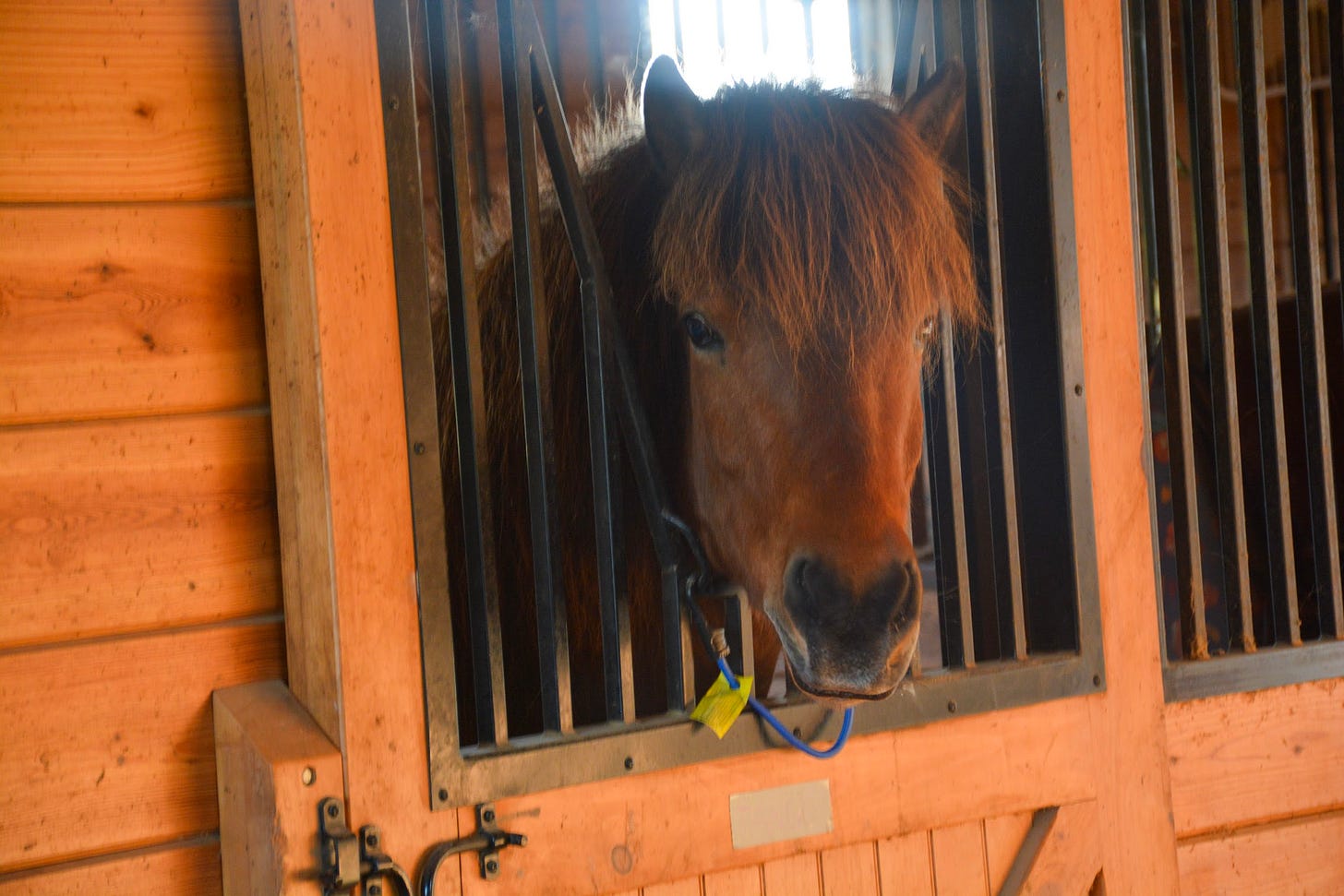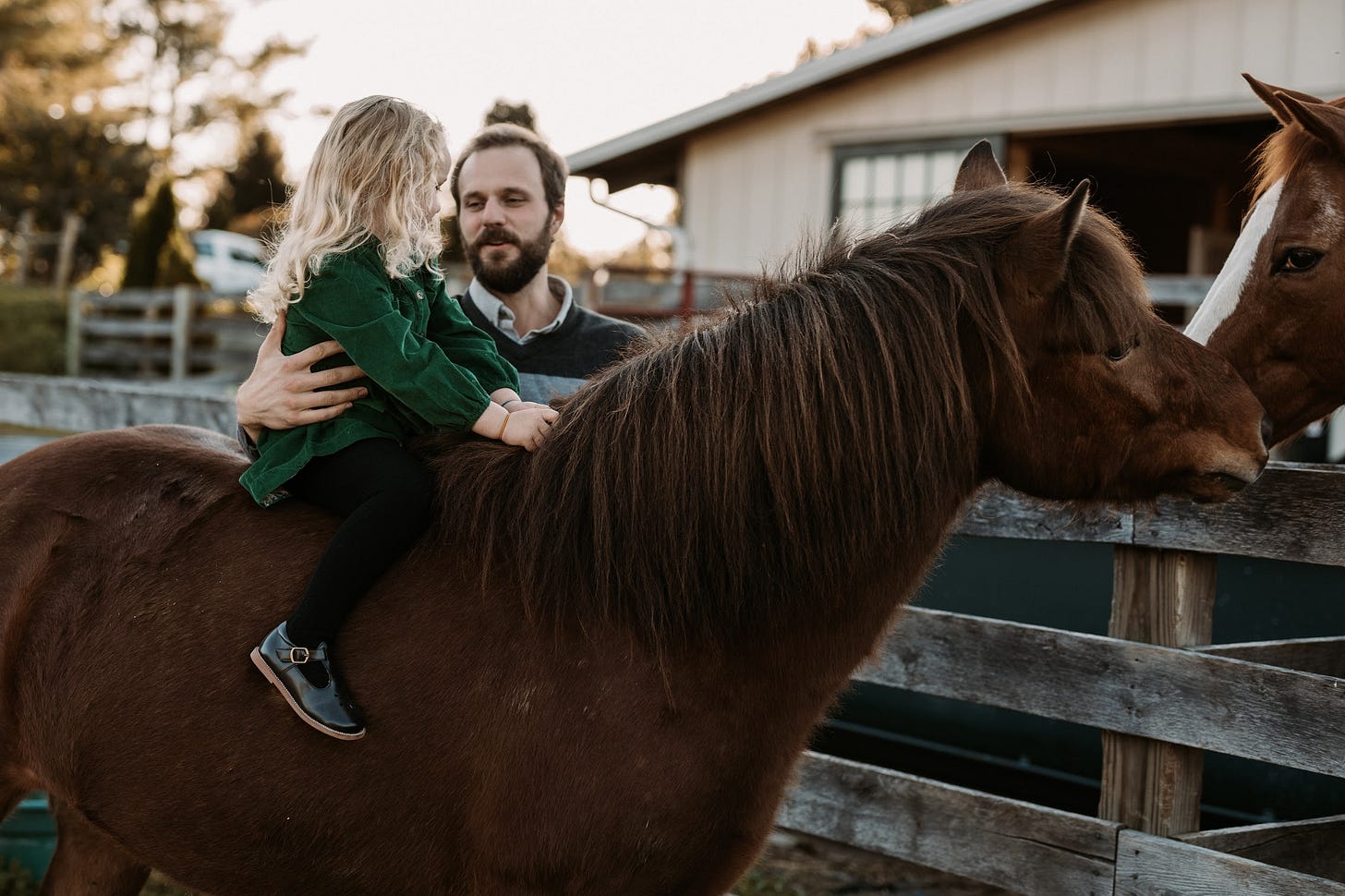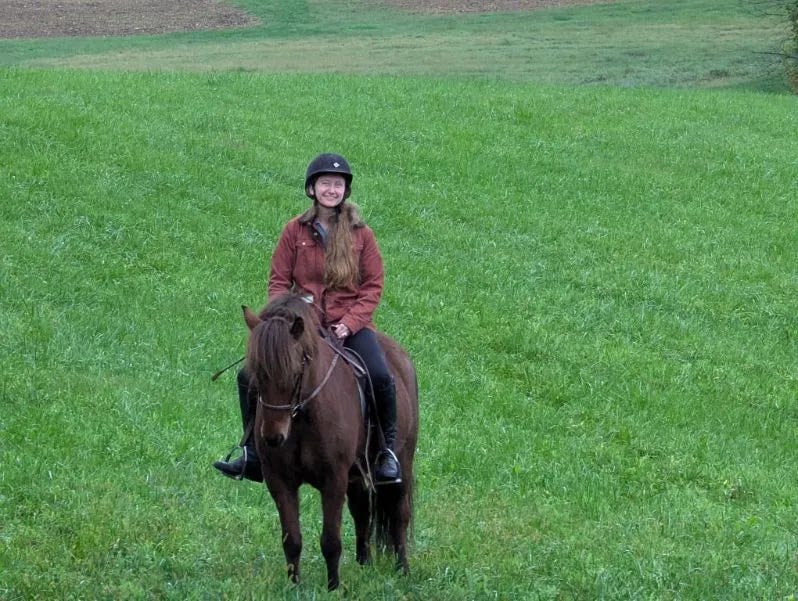It was bizarre. I was obsessed with Iceland, a country I had never been to.
I poured over the sagas, listened to podcasts expounding on their themes, even listened to traditional Icelandic music. And I watched absolutely every single Youtube documentary, clip, and news reel, about the Icelandic Horse.1
What is the Icelandic Horse? Well, first things first, don’t call it a pony. Icelandic people will get very angry with you. Traditionally ponies are generally defined as being 14.2 hands or smaller (which nearly all Icelandic horses are) but in temperament and build the Icelandic Horse is a horse. Their bone structure is similar to a draft’s, and certainly sturdy enough to carry a grown man (indeed to carry the Vikings who originally bred them).
Arguably the purest horse breed in the world, the Icelandic Horse has not encountered another breed on its small island in over a thousand years. The integrity and health of the horse has been fiercely defended. When a horse leaves Iceland, it can never return. It will also have to be vaccinated for the very first time. There are no equine diseases in Iceland, and no imported horses to spread them.
They are a gaited breed which means they have some extra “movements” beyond the traditional walk, trot, canter, and gallop. Icelandics are famous for their tolt - a remarkably smooth four beat gait that can get you up to the speed of a fast canter or gallop, but with the smoothness and steadiness of a walk. It’s bizarre to watch and wonderful to ride. A popular sport in Iceland is the “beer tolt” - hold a beer steady while you tolt and don’t let any spill. It should be that effortless. The other gait, which not all Icelandics have, is the flying pace — extremely fast, up to 30mph in seconds, and only in short bursts. Look up an Icelandic pacing, big wild mane blowing and you’ll want to either laugh at the absurdity or cry in wonder. Maybe both.
The Icelandic Horse features prominently in the sagas and in Icelandic myth. There is Odin's eight-footed pacer named Sleipnir, allowing gods and other beings to travel between realms and across the sky. And then there is the patient and wise Skalm, a mare who appeared in the Book of Settlements from the 12th century. According to the book, a chieftain named Seal-Thorir founded a settlement at the place where Skalm stopped and lay down with her pack.
Icelandic people also eat horses to this day. When the Catholic Church arrived, it was one of the first things they banned, but the tradition continued in the countryside. Some even say the purging and thinning of the herds in unsentimental fashion is one of the reasons for the Icelandic’s remarkably patient and easygoing temperament. Any horse that lashed out was simply culled.
So there is this horse. What did it have to do with me?
Lots of people discover Icelandic horses when they find a cheap Icelandic Air flight and do the Ring Road tour. They see these shaggy beasts roaming wild and wonder, what is that? Even owned Icelandic horses are often let loose over the mountains for part of the year. There is a real respect in Iceland for the integrity and independence of the horse. They should know how to handle themselves. They should run free.
But I discovered them on an interview with the author Nancy Marie Brown. I was asking her about elves, and how Icelanders believe in them. But at the end I snuck in a few questions about these horses. She has four herself. She wrote a book about finding her first horse. She loves these horses and she sold them to me. She painted an image of a family friendly horse - anyone can ride them - kids, amateurs, husbands. These horses are patient. They are safe. But behind those eyes they also hold all the wildness of their Viking past. They can tolt for miles. They can carry you up a mountain. They are strong.
I daydreamed about these horses.
And then one day, I sent an Icelandic horse trainer a message on a whim. She wrote back immediately - “I have the perfect horse for you.”
He was bay. Not very flashy. Icelandic horses come in all colors - ethereal grey, creative pintos, stark black. But he was bay - plain bay, with black points. He looked like the Connemara pony I had as a girl. Maybe that’s why I liked him so much immediately, even in those grainy photos and videos.
I blame my Icelandic dream-state but I said yes. I said yes to the horse and yes to going to Vermont and trying him. The day I bought him was the first day I tolted. What was it? I barely knew, but I would find out. The gait came naturally to him, so it came naturally to me too. Lift your hands, squeeze, sit up… Go.
Horses hadn’t felt effortless in a long time. A childhood of competitions and thoroughbreds and fox hunting and I had forgotten that I could go out and… walk. I could look up at the sky. I could watch a hawk land on a tree branch. I could let a horse carry me into the fields. I could brush them in the afternoon, or sneak them an extra treat.
This horse was easy. He was the same whether I rode him everyday or every 10 days. For a busy mother, this is worth everything. I joke that I could pay for therapy (may still need to pay for that, but still) or the horse. It’s a joke, but it’s also true.
Horses are one of those animals that are more than what they are. They didn’t ask to be this way, but they became something to the human race. They symbolized something.
God spoke from the whirlwind — “Have you given the horse its strength or clothed its neck with a flowing mane? Did you give it the ability to leap like a locust? Its majestic snorting is terrifying! It paws the earth and rejoices in its strength when it charges out to battle.”
And Jane Smiley, author and horse enthusiast (and also connoisseur of the Icelandic sagas - starting to think we’re a type) wrote — “Fascination with horses predated every other single thing I knew. Before I was a mother, before I was a writer, before I knew the facts of life, before I was a schoolgirl, before I learned to read, I wanted a horse.”
When my mother was a little girl in a townhouse in Dundalk, she dreamed about horses. She gave them to me, and then, years later, I started to dream about a world of ash and myth, with a horse that could carry me there, even in the lush fields here at home, we could still touch that place. He had been there. In a way, he is that place.
He has a wonderfully un-Icelandic name: Tango. But it is traditional. All Icelandic horses must have an Icelandic name or a name with a tradition in Iceland if they are to be registered. And there are many Icelandics named Tango — because they dance. Their smooth tolt and their strong walk and the way they invite their partner into something fiery and passionate. Tango.
Most days in the summer he is grumpy in the heat. He has two fans and extra fly spray. I haven’t ridden in nearly a month. Too much chaos. Too much heat. I don’t like it either, buddy. But this last winter I rode in the snow - in the rain - in the wind - and it was the first time in a long time I felt safe and adventurous enough to do that. He gave that to me.
I wrote an essay for the Icelandic Quarterly about how a childhood of training regiments and competitions had not taught me gentleness with horses. It had not taught me about breaks and taking it easy and going on aimless trail rides. But this Icelandic Horse taught me that. If they decide to publish I will share it here.
But for now I will just say happy Birthday Tango! 11 years old today - one year here on the farm - one year and one month in the United States. Thank you for being the horse I needed - and also being much more than a horse, as so many kind animals are - gentle bridges between our world and something greater, more beautiful, and more wild.
skál, my friend.
If you’re new around here, my name is Katie and I’m an erstwhile podcaster, current audio consultant, writer, mother, and hopeful farmer. I have my paid subscriptions paused for the time being (if you are a paid subscriber, this means you are not being charged currently. If you are an annual subscriber, you won't ‘lose’ any months).
I am leaving things on pause until I feel I have the ability to give my paid subscribers what they are paying for — namely one physical monthly mailing in their mailbox. As a paid subscriber you also have the ability to access the archives (almost all posts are paywalled after 2 weeks). Thank you to those who have supported me in the past and for those considering it when I open things back up.
In the meantime, if you’d like to buy me a coffee, I’d be very grateful!
And a like/comment/share go a long way! Thanks for reading!









Oh my gosh he's adorable. Happy birthday Tango! I also had the growing-up TBs and competition mindset - I dream of someday having the space and money to have a horse like Tango and just get back to being a girl who loves horses <3
Such a sweet story. Happy 11 Tango! 🐴Luv the pix! 🫶🏻